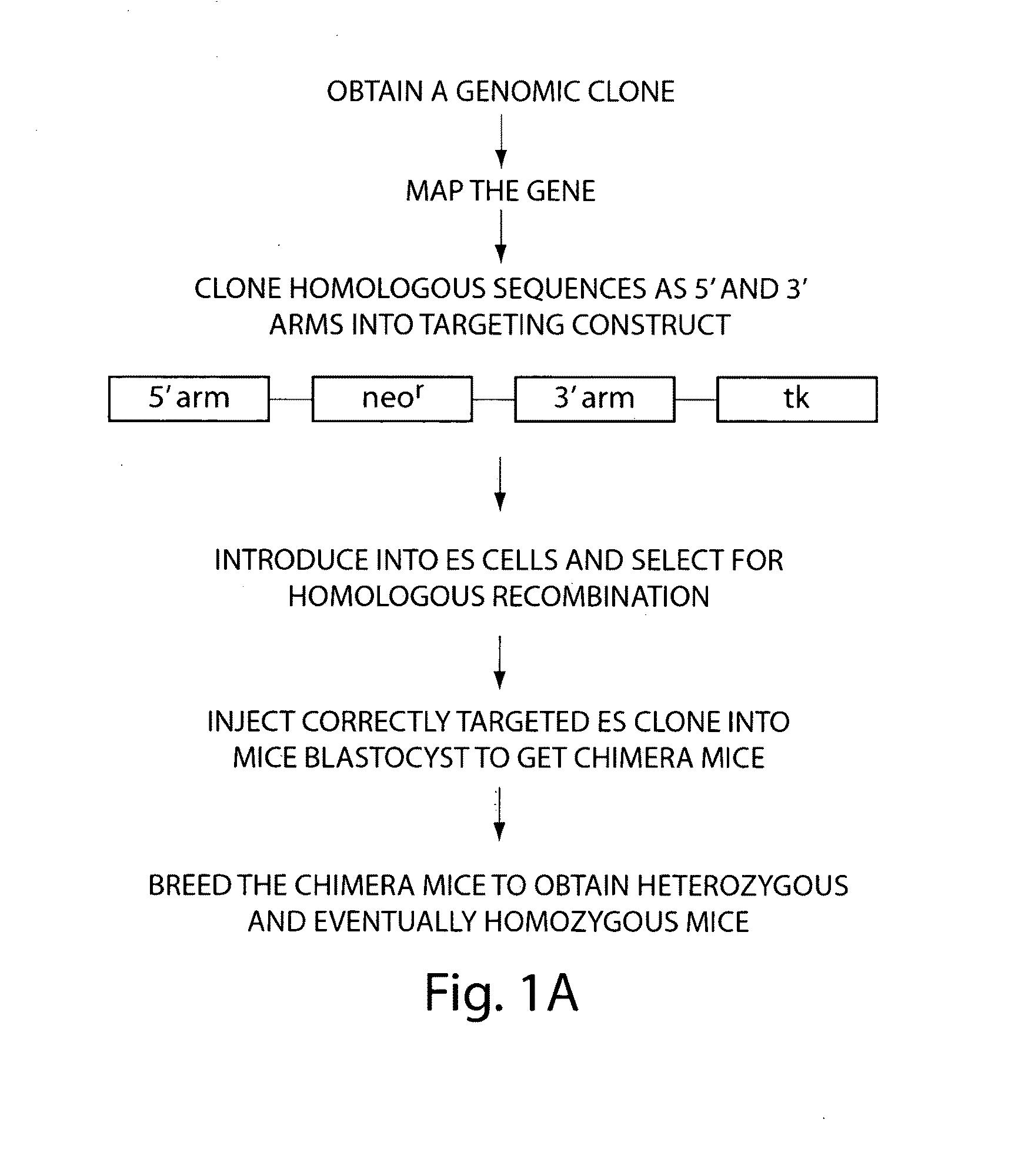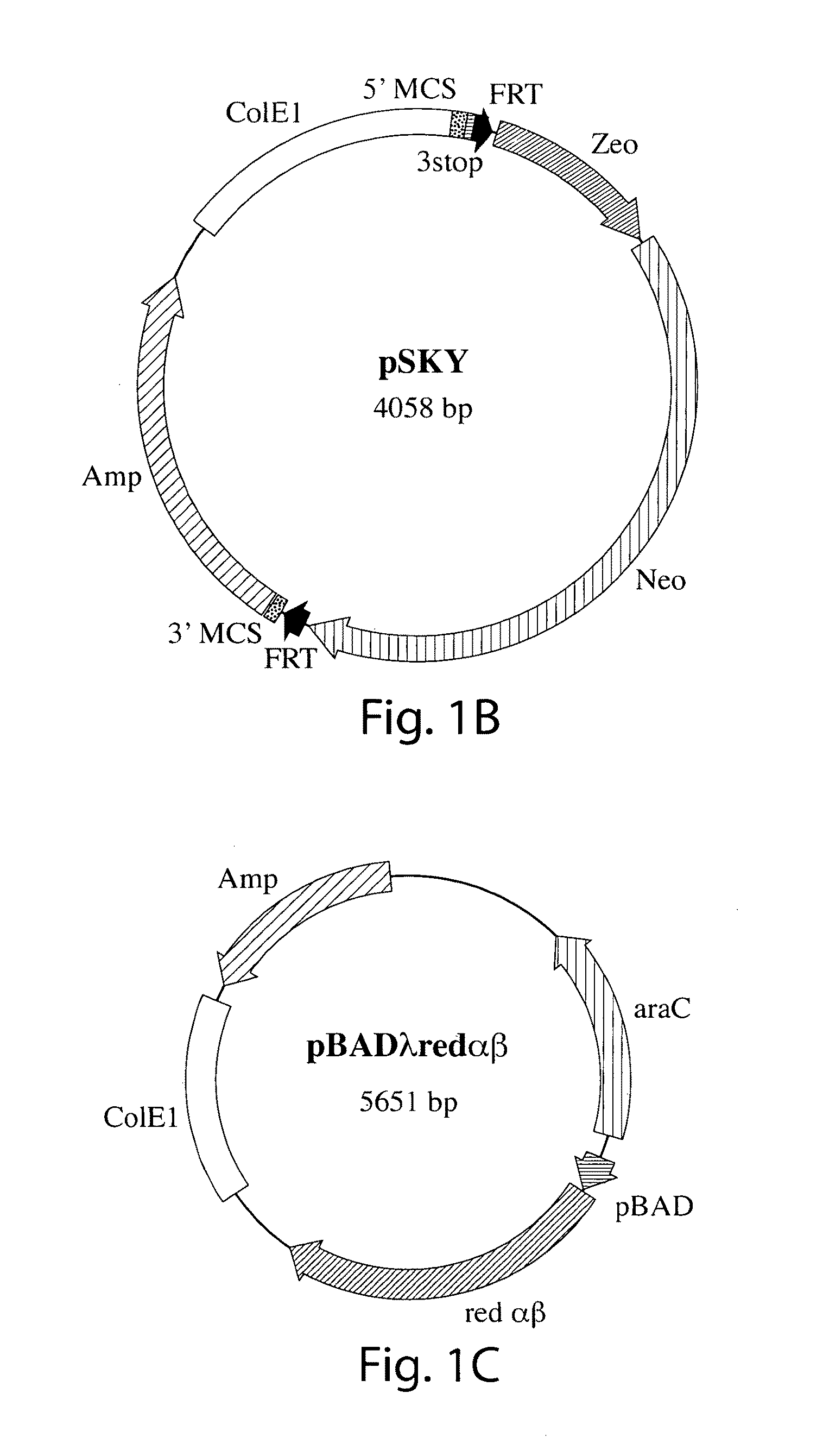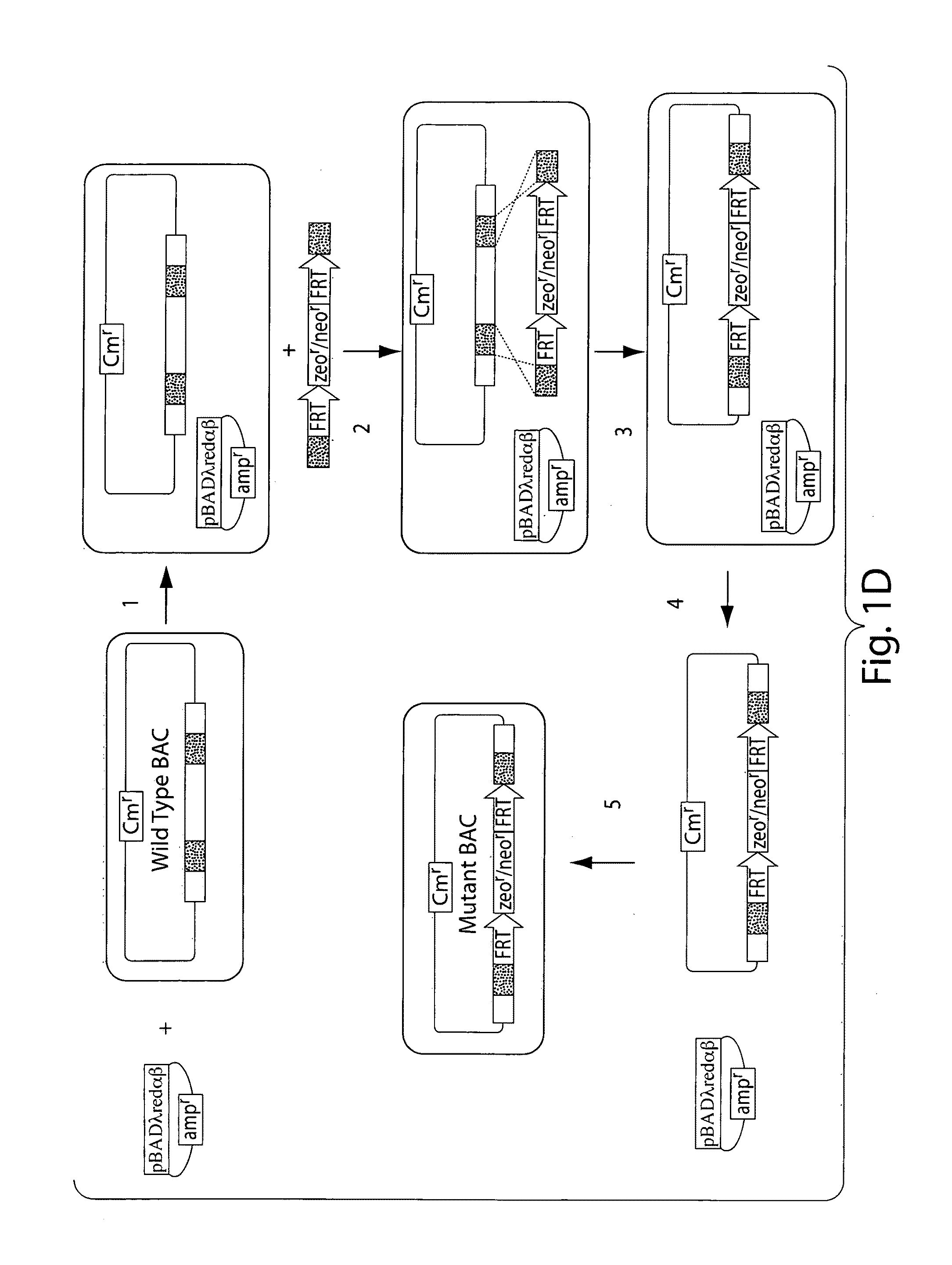Methods for the production of cells and mammals with desired genetic modifications
a technology of genetic modification and cell, applied in the field of methods for producing cells and mammals with desired genetic modification, can solve the problems of low homologous recombination frequency, long and tedious process, time-consuming and labor-intensive traditional procedures for generating site-specific gene knockout mice, etc., to reduce the number of transfected cells, reduce time and labor, and increase the efficiency of homologous recombination
- Summary
- Abstract
- Description
- Claims
- Application Information
AI Technical Summary
Benefits of technology
Problems solved by technology
Method used
Image
Examples
Embodiment Construction
[0066]To overcome difficulties associated with conventional site-specific modification methods, we have developed a method that uses modified artificial chromosomes (e.g., BACs, PACs, or YACs) that contain a genetic modification of interest as targeting constructs. The large amount of sequence that is homologous between the artificial chromosome and an endogenous chromosome of the targeted cells greatly increases the efficiency of homologous recombination between the region of the artificial chromosome containing the genetic modification of interest and the corresponding region of the endogenous chromosome. For example, murine BACs contain 100-150 kilobases of mouse genomic sequence that is substantially identical to an endogenous chromosome of a targeted mouse cell, such as an embryonic stem (ES) cell.
[0067]For these methods, an artificial chromosome containing a genomic insert (e.g., a region of a mouse chromosome) with a nucleic acid of interest is obtained from a commercial sour...
PUM
| Property | Measurement | Unit |
|---|---|---|
| time | aaaaa | aaaaa |
| time | aaaaa | aaaaa |
| temperatures | aaaaa | aaaaa |
Abstract
Description
Claims
Application Information
 Login to View More
Login to View More - R&D
- Intellectual Property
- Life Sciences
- Materials
- Tech Scout
- Unparalleled Data Quality
- Higher Quality Content
- 60% Fewer Hallucinations
Browse by: Latest US Patents, China's latest patents, Technical Efficacy Thesaurus, Application Domain, Technology Topic, Popular Technical Reports.
© 2025 PatSnap. All rights reserved.Legal|Privacy policy|Modern Slavery Act Transparency Statement|Sitemap|About US| Contact US: help@patsnap.com



